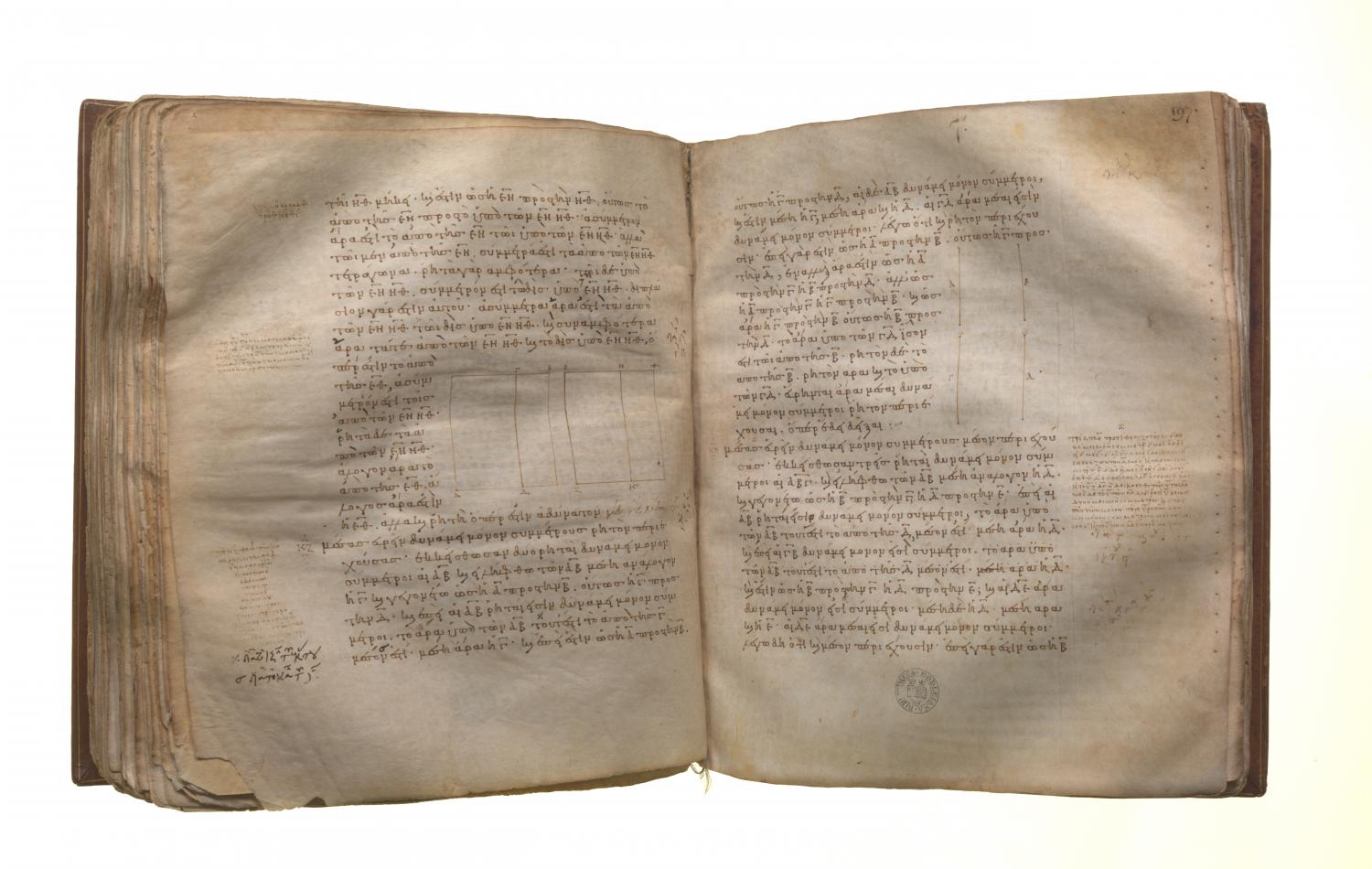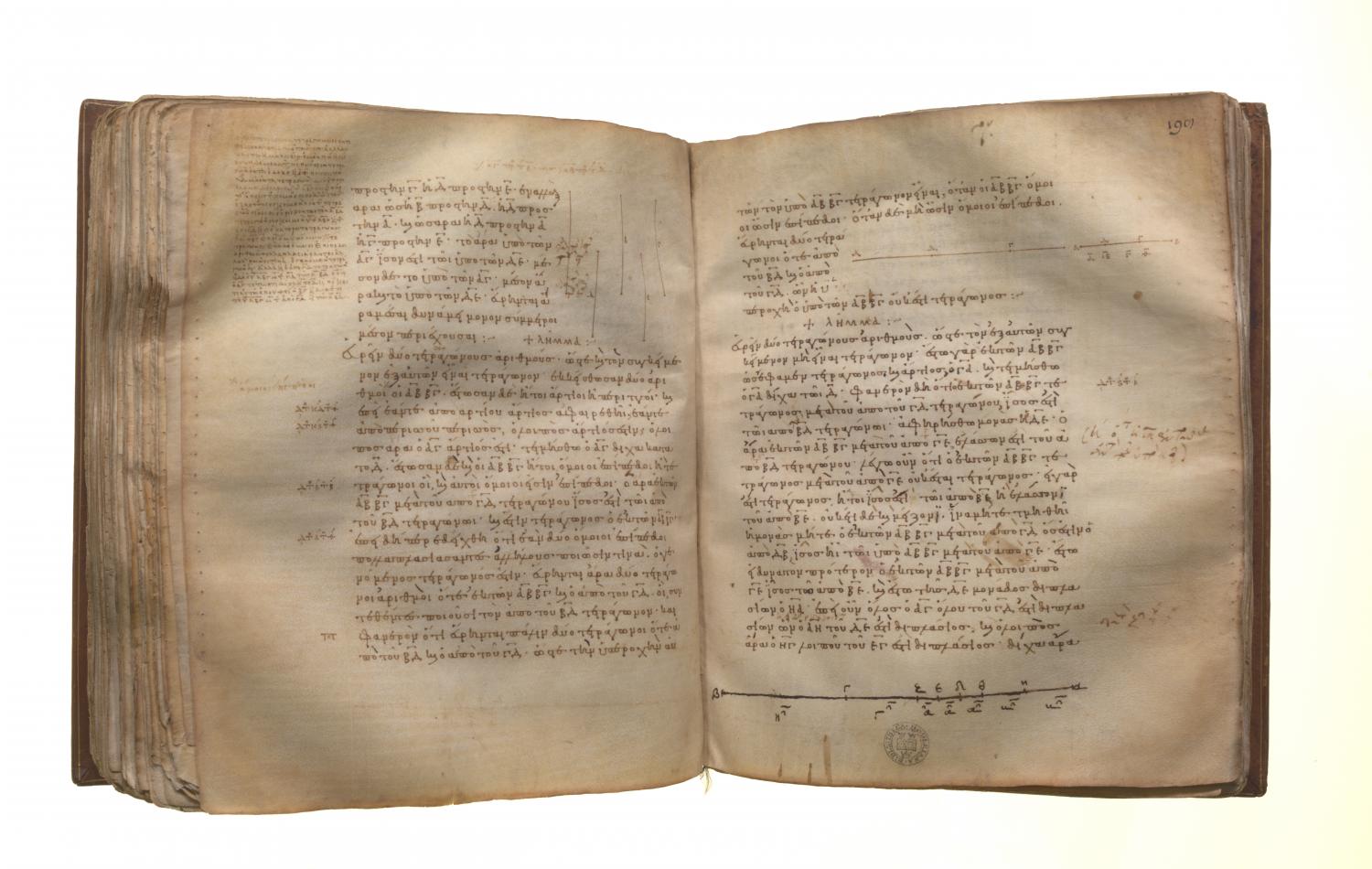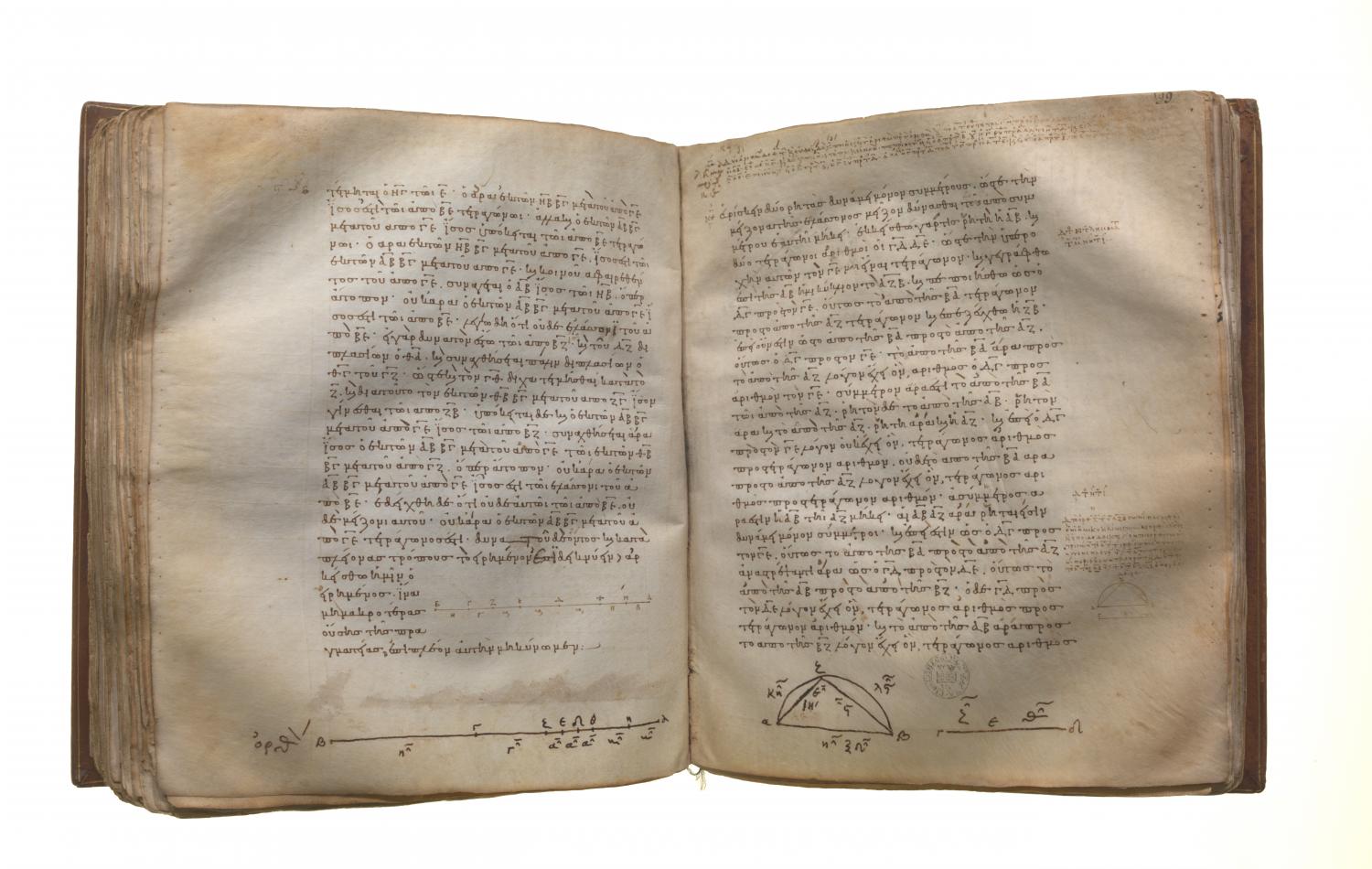Classification of incommensurables: Book 10 Proposition 28
Translations
To find medial straight lines commensurable in square only which contain a medial rectangle. Let the rational straight lines A, B, C commensurable in square only be set out; let D be taken a mean proportional between A, B, [VI. 13] and let it be contrived that, as B is to C, so is D to E. [VI. 12] Since A, B are rational straight lines commensurable in square only, therefore the rectangle A, B, that is, the square on D [VI. 17], is medial. [X. 21] Therefore D is medial. [X. 21] And since B, C are commensurable in square only, and, as B is to C, so is D to E, therefore D, E are also commensurable in square only. [X. 11] But D is medial; therefore E is also medial. [X. 23, addition] Therefore D, E are medial straight lines commensurable in square only. I say next that they also contain a medial rectangle. For since, as B is to C, so is D to E, therefore, alternately, as B is to D, so is C to E. [V. 16] But, as B is to D, so is D to A; therefore also, as D is to A, so is C to E; therefore the rectangle A, C is equal to the rectangle D, E. [VI. 16] But the rectangle A, C is medial; [X. 21] therefore the rectangle D, E is also medial. Therefore medial straight lines commensurable in square only have been found which contain a medial rectangle. Q. E. D.Lemma 1. To find two square numbers such that their sum is also square. Let two numbers AB, BC be set out, and let them be either both even or both odd. Then since, whether an even number is subtracted from an even number, or an odd number from an odd number, the remainder is even, [IX. 24, 26] therefore the remainder AC is even. Let AC be bisected at D. Let AB, BC also be either similar plane numbers, or square numbers, which are themselves also similar plane numbers. Now the product of AB, BC together with the square on CD is equal to the square on BD. [II. 6] And the product of AB, BC is square, inasmuch as it was proved that, if two similar plane numbers by multiplying one another make some number the product is square. [IX. 1] Therefore two square numbers, the product of AB, BC, and the square on CD, have been found which, when added together, make the square on BD. And it is manifest that two square numbers, the square on BD and the square on CD, have again been found such that their difference, the product of AB, BC, is a square, whenever AB, BC are similar plane numbers. But when they are not similar plane numbers, two square numbers, the square on BD and the square on DC, have been found such that their difference, the product of AB, BC, is not square. Q. E. D.Lemma 2. To find two square numbers such that their sum is not square. For let the product of AB, BC, as we said, be square, and CA even, and let CA be bisected by D. It is then manifest that the square product of AB, BC together with the square on CD is equal to the square on BD. [See Lemma 1] Let the unit DE be subtracted; therefore the product of AB, BC together with the square on CE is less than the square on BD. I say then that the square product of AB, BC together with the square on CE will not be square. For, if it is square, it is either equal to the square on BE, or less than the square on BE, but cannot any more be greater, lest the unit be divided. First, if possible, let the product of AB, BC together with the square on CE be equal to the square on BE, and let GA be double of the unit DE. Since then the whole AC is double of the whole CD, and in them AG is double of DE, therefore the remainder GC is also double of the remainder EC; therefore GC is bisected by E. Therefore the product of GB, BC together with the square on CE is equal to the square on BE. [II. 6] But the product of AB, BC together with the square on CE is also, by hypothesis, equal to the square on BE; therefore the product of GB, BC together with the square on CE is equal to the product of AB, BC together with the square on CE. And, if the common square on CE be subtracted, it follows that AB is equal to GB: which is absurd. Therefore the product of AB, BC together with the square on CE is not equal to the square on BE. I say next that neither is it less than the square on BE. For, if possible, let it be equal to the square on BF, and let HA be double of DF. Now it will again follow that HC is double of CF; so that CH has also been bisected at F, and for this reason the product of HB, BC together with the square on FC is equal to the square on BF. [II. 6] But, by hypothesis, the product of AB, BC together with the square on CE is also equal to the square on BF. Thus the product of HB, BC together with the square on CF will also be equal to the product of AB, BC together with the square on CE: which is absurd. Therefore the product of AB, BC together with the square on CE is not less than the square on BE. And it was proved that neither is it equal to the square on BE.


